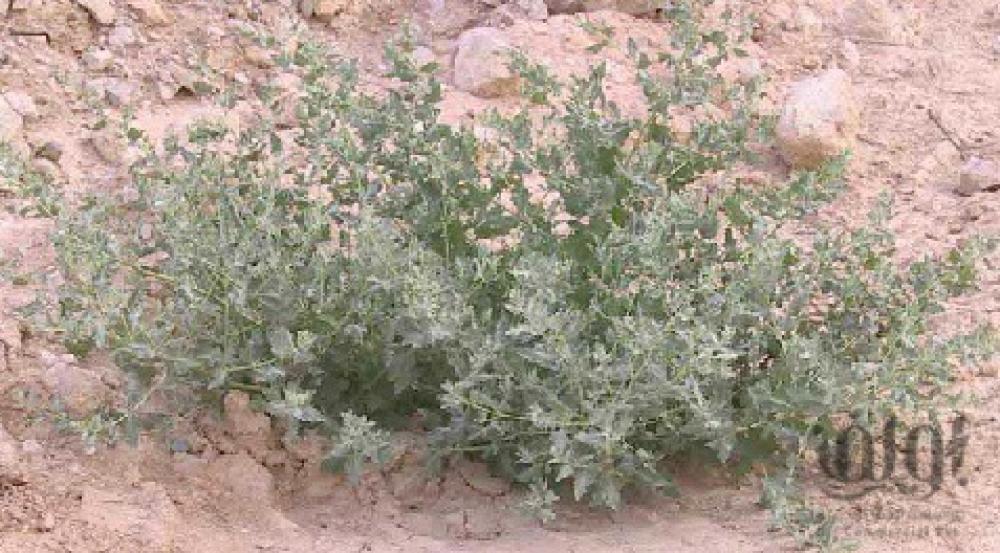🌿 Atriplex plant: its benefits, types, and cultivation guide
What is the plant ragal?
Atriplex , also known as saltbush , is a wild plant in the Amaranthaceae family , comprising more than 250 species worldwide. It is characterized by its tolerance to drought and soil salinity , making it an ideal choice for cultivation in arid and semi-arid regions such as the Arabian Gulf.
Botanical description of the ragal plant
- Growth and form: A perennial herbaceous or shrubby plant, ranging in height from 30 cm to 2 m.
- Leaves: Silvery or green, covered with a salty coating that reduces water evaporation.
- Flowers: Small, yellowish-green, growing in clusters.
- Seeds: Small in size, with a high germination capacity even in saline soil.
Geographical distribution
In the Arab world
The ragal is widespread in Saudi Arabia, the United Arab Emirates, the Sultanate of Oman, Kuwait, Egypt, Morocco, and Libya, where it is grown to combat desertification and provide fodder for livestock.
In the world
- Australia: One of the most important pasture crops.
- North America: Used to stabilize sand dunes.
- Europe: Grown as a leaf vegetable known as Orach.
The most famous types of ragal plant
- Saltwort ( Atriplex halimus ): used as a drought-resistant fodder.
- Red clover ( Atriplex hortensis ): Grown as a nutritious leaf vegetable.
- American ragwort ( Atriplex canescens ): Ideal for stabilizing sandy soils.
- Atriplex nummularia : widely used in Australia as forage.
Environmental importance
- Combating desertification through sand dune stabilization.
- Absorbing excess salts from the soil and improving its fertility.
- Providing food and shelter for desert creatures.
Agricultural importance
- Livestock feed: rich in protein and minerals (calcium, sodium).
- Land Rehabilitation: Ideal for saline and dry lands.
- Ornamental plant: With its silver leaves, it is used in desert gardens.
Food uses
- Some species, such as red squill, are consumed like spinach.
- The seeds were ground and used to make bread in ancient times.
- Rich in iron, calcium, and essential vitamins.
traditional medicinal uses
- A decoction of its leaves was used to treat digestive disorders.
- In folk medicine, it has been used to strengthen the body and treat infections.
How to grow ragal
soil
It grows and thrives in sandy and saline soil.
climate
Prefers hot, dry climates and tolerates moderate cold.
Irrigation
It requires little water, making it resource-efficient.
Reproduction
Mostly by seeds, but some species can be propagated by cuttings.
Raghul and combating climate change
- Reduces desertification and preserves vegetation cover.
- Improves and revives saline soil.
- Drought-resistant agricultural alternative in times of water scarcity.
Challenges and risks
- It may contain high levels of salts, which limits the consumption of some types.
- If not managed agriculturally, it may become an invasive plant in some environments.
Raghl products in Olf Nursery
In Olive Nursery we provide:
- 🌱 High quality ragal seeds with excellent germination rate.
- 🌱Raghal seedlings for planting farms and gardens.
- 🌱 Free agricultural consultations for our clients to help them combat desertification and grow drought-resistant plants.
📌 Order now ragal seeds and seedlings from Olf Nursery, and invest in sustainable agriculture that suits your environment.
Frequently asked questions about the ragal plant
What is the plant of ragal?
A wild plant resistant to drought and salinity, used in combating desertification and as fodder.
Is ragal suitable as animal feed?
Yes, it is one of the most important sources of fodder in desert areas.
When to plant ragal?
It is usually grown in mild seasons and tolerates harsh conditions.
Does Olf Nursery provide sage seeds and seedlings?
Yes, we provide high-quality seeds and seedlings suitable for cultivation in arid lands.

